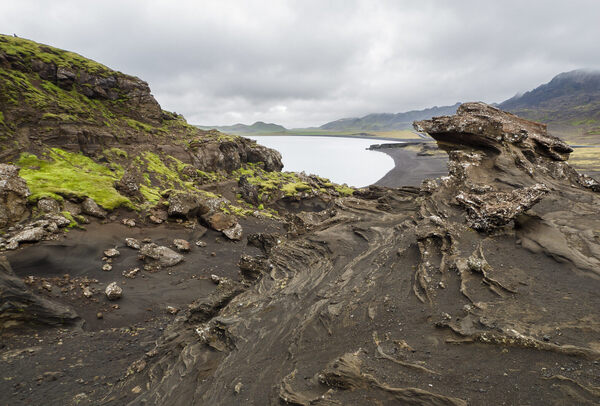This story was originally published in The Conversation and appears here under a Creative Commons license.
More than 17,000 earthquakes have in a little over a week in the southwest of Iceland, on the Reykjanes Peninsula. People living in the area have been advised to be extra careful due to the danger of landslides and rock falls. Many of the major earthquakes are even felt in the capital of Iceland, Reykjavík – where more than half of the population lives – which is only 27 kilometers away.
This has led to greater concern about the consequences of even greater earthquakes, and also of a possible eruption from the Krýsuvík volcanic system in the area.
Southwest Iceland has a record of centuries of calm, which we know can be broken by turbulent periods of intense earthquake activity accompanied by volcanic eruptions. We seem to be entering the next turbulent period.
The most recent earthquake swarm is in fact the latest in a period of significantly increased seismic activity that began a year ago. The earthquake is the most obvious manifestation of the release of large amounts of energy. But magma has also quietly accumulated closer to the surface – and if it does, the surface is more likely to break up and erupt the volcanoes.
On March 3, the concern increased sharply as a type of earthquake activity characteristic of the movement of magma was detected, suggesting that an eruption might be imminent. The civil defense and other authorities held press conferences, closed roads and increased visual surveillance of the area above the potential eruption site. Of course, magma may move in the crust and then stop, but it is always wise to plan for an eruption and then scale back if nothing happens.

The problem is that the last time southwest of Iceland experienced such a turbulent period of earthquakes and volcanic eruptions, in the 1300s – when there was no equipment to monitor seismic activity. There were also far fewer people, which means we do not really know what signals were there before outbreaks occurred. So there are big uncertainties.
However, Iceland has a leading network for monitoring seismic and volcanic unrest, and an excellent record of forecasting eruptions and maintaining the safety of its population. So if an eruption happened, the chances are good.
An eruption in this area would be nothing like the extremely disruptive explosive eruption of Eyjafjallajökull in 2010, or the much larger explosive but much less disruptive explosive eruption of Grímsvötn in 2011. Eruptions in southwestern Iceland are of a liquid rock form that called basalt. This results in slow-moving streams of lava fed by craters and cones that explode gently.
In Iceland, these are heartily called ‘tourist eruptions’ because they are relatively safe and predictable and offer many hundreds of people the opportunity to see a magical natural spectacle – the creation of new land. In the past, tourists flocked to Iceland to witness such eruptions, but currently there is a five-day quarantine period for tourists entering Iceland due to the pandemic.
In the current area of unrest, there are no nearby homes – it is reassuringly remote. It is very unlikely that lava flows flowing out of the area will damage any property on predicted paths, but if the lava moves to the sea, it will cut off some roads.

The biggest concern internationally about a volcanic eruption in Iceland is the disruption of air travel. Not only can winds transport ash clouds quickly to Western Europe (as we saw with the eruption of Eyjafjallajökull in 2010), but ash clouds can rise high into the atmosphere and into the stratosphere where commercial airlines travel across the busy Atlantic airways.
But the volcanoes in southwestern Iceland tend not to produce much ash, and the risk of international air travel disruption is therefore considered very small. If an eruption starts, flights will automatically be stopped at Keflavík International Airport, which is only 22 kilometers away, until a fuller evaluation has been carried out.
The wind direction has a great effect here, and since the prevailing wind is from a westerly direction and Keflavík sits on the west side of this southwestern peninsula, it would be expected that winds would carry away any ash from Keflavík. The important effects of wind direction were beautifully emphasized in 2010, when Keflavík Airport remained open while airports in Western Europe were closed for weeks.
While current COVID-19 restrictions on entering Iceland will prevent hordes of tourists from traveling to see a possible eruption, many Icelanders will travel to observe it. They have a strange saying in Iceland: “While people in most countries usually run away from volcanic eruptions, we usually run towards them.”
Dave McGarvie is a volcanologist at Lancaster University.
